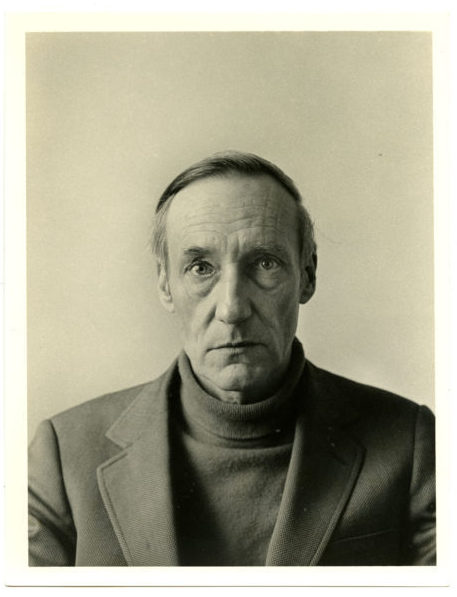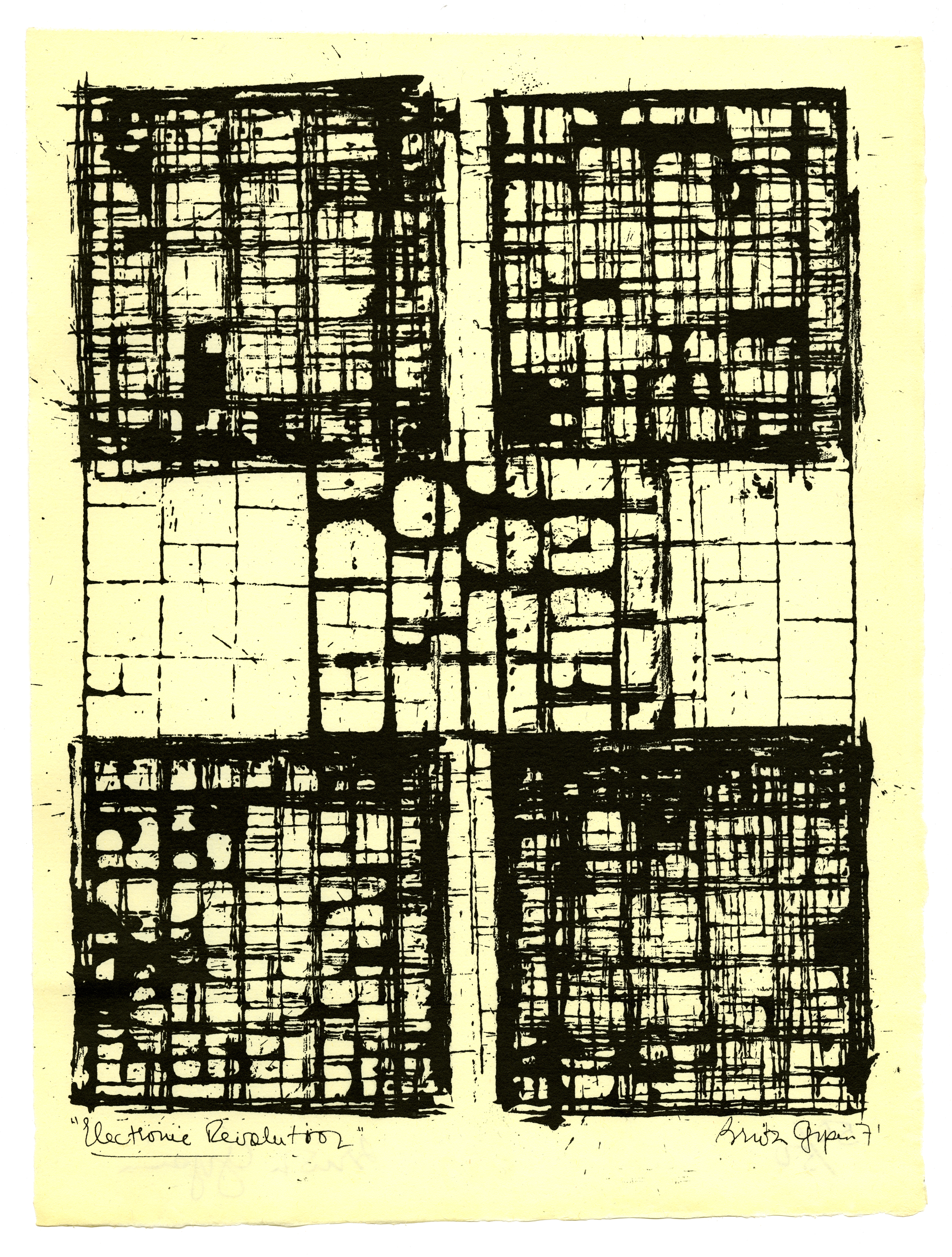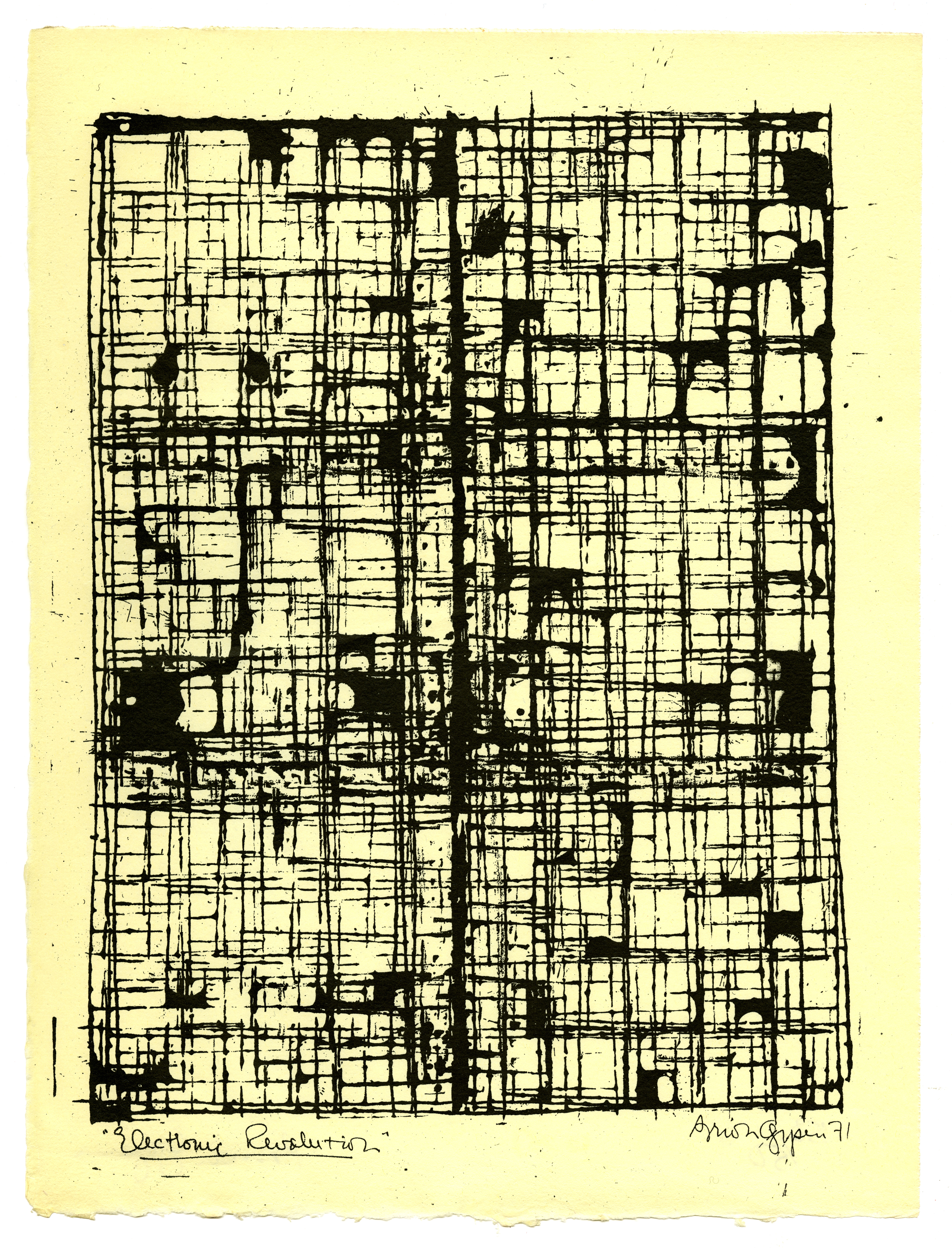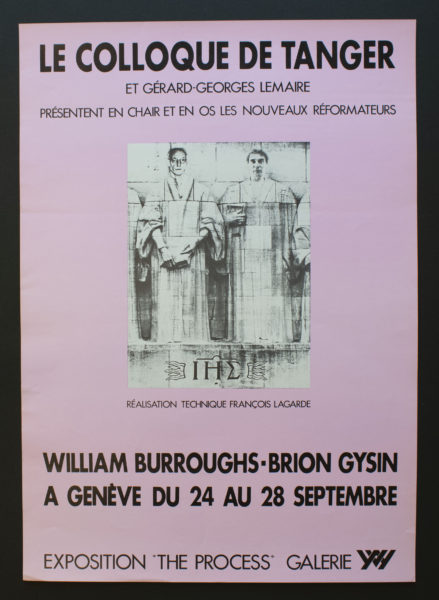Charles Gatewood (American, 1942 – 2016)
William Burroughs, London, 1972
gelatin silver print
Photographer Charles Gatewood accompanied Rolling Stone reporter Robert Palmer to interview William S. Burroughs in London in 1972. Gatewood later recalled his first impression: “The iconic Beat writer greeted us warmly, and showed us into his modest two-room flat on Duke Street, St. James, near Piccadilly. He was a tall, thin man with a sad face — long nose, thin lips, steely blue-gray eyes. Impeccably dressed in slacks, turtleneck, and tweed sport coat, Burroughs looked a hundred percent straight. Maybe that’s why the world’s most notorious literary outlaw was called El Hombre Invisible.”
Charles Gatewood (American, 1942 – 2016)
Brion Gysin, William Burroughs and the Dream Machine, London, 1972
printed 2011, gelatin silver print
The Dream Machine was invented by Brion Gysin and Ian Sommerville, a British mathematician and “systems engineer” who became William S. Burroughs’s companion. It used a rotating perforated cylinder with a light inside it to produce flickering patterns that acted on the brain, inducing trance-like states. Meant to be “viewed” with the eyes closed, it mimics the frequency of the brain’s alpha waves and may induce a hypnagogic state— the state between waking and sleeping when the brain becomes open to hallucinations and sensory effects such as moving patterns. Gysin had hoped that the Dream Machine, mass-produced, would replace drugs, on the one hand, and television on the other.
Brion Gysin (American, 1916 – 1986):
Electronic Revolution, 1971
Electronic Revolution, 1971
screen prints on paper
Blackmoor Head Press, Cambridge, England
These artworks belong to Brion Gysin’s extensive series of “Roller Grid” prints, in which a paint roller was modified to lay down a grid pattern. Repetitive yet always featuring distinct markings, the roller grids represented an idiosyncratic system, an irrational order, combining repetition and chance. The principle of the “rolling grid” (endless repetition with endless variation) can be seen at work in many of Gysin’s and William S. Burroughs’s projects, including the Dream Machine and Burroughs’s three-column scrapbook collages.
Brion Gysin (American, 1916 – 1986)
L’Ile St. Louis, Paris, 1974
screen print with collaged photographs on paper
Le Colloque de Tanger, William Burroughs – Brion Gysin, 1977
lithograph on paper
This poster announced a symposium organized in the late 1970s by art historian Gérard-Georges Lemaire to celebrate the work of William S. Burroughs and Brion Gysin, who reunited for the event. It featured performances, films, and a rock concert. The illustration by François Lagarde is a photo-collage of Burroughs’s and Gysin’s heads superimposed on the statues of the two Protestant reformers, John Calvin and Théodore Bèze.







